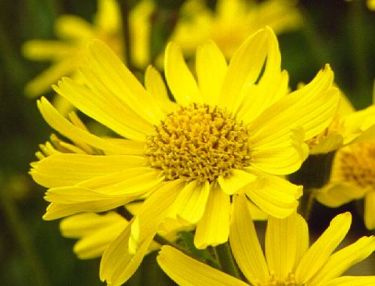Arnica Arnica is an aromatic perennial with bright yellow daisy like flowers. When dried,the flower and the rhizome (root) are used in herbal medicine. Native to the mountains in Europe, it is also found in Russia. Arnica is an aromatic perennial with bright yellow daisy like flowers. When dried,the flower and the rhizome (root) are used in herbal medicine. Native to the mountains in Europe, it is also found in Russia. As a antibiotic, anti-inflammatory and pain reliever, the extracts of this herb have been used to minimize the effects of tissue trauma and assist in the healing process. It may reduce bruising and swelling and shortens recovery time. It is primary use is external as a salve or tincture. Unfortunately, the dosing varies so much as do the delivery forms (tablets, etc) used in clinical studies, the making broad statements about this herb is hard. Alcoholic tinctures were made by the early settlers in the US in order to treat a sore throat and taken orally in an effort to improve circulation. Europeans had used it for the same reasons. Health Benefits
DosageUnfortunately, this is one of those herbs that should never be taken orally or applied to open wounds. There is no one dose that has been agreed upon when it comes to topical application of creams. Several different homeopathic studies have been performed but for different doses and different reasons such as rash vs sprains. None of the studies were large, so the basic idea is to try the cream an see if it helps with swelling associated with sprains. Cautions In UseDo not use the salve on an open wound or broken skin. NEVER take arnica internally, it contains compounds similar to Pitocin used to induce uterine cramping. Therefore it should not be used by pregnant women. The plant itself is poisonous and eating it can cause severe gastritis, shortness of breath and even cardiac arrest and death. Do not use it for more than two weeks at a time, if you develope a rash, discontinue immediately. | | |
|
Information
Treatment
How To
Legal
| ||
|
| Home Page | Privacy Policy |Medical Disclaimer |Written by Mary Kay Betz |
Copyright©
2008-2012
| ||

